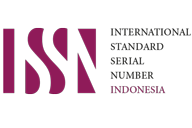
Peningkatan skill hybrid training kewirausahaan olahraga berbasis micro learning
Abstract
Keywords
Full Text:
PDFReferences
Benedek, A., & Veszelszki, Á. (2016). In the Beginning was the Image: The Omnipresence of Pictures: Time, Truth, Tradition. Peter Lang International Academic Publishers. https://doi.org/10.3726/b10396
Boyle, T., Bradley, C., Chalk, P., Jones, R., & Pickard, P. (2003). Using Blended Learning to Improve Student Success Rates in Learning to Program. Journal of Educational Media, 28(2–3), 165–178. https://doi.org/10.1080/1358165032000153160
Buzzetto-More, N., & Sweat-Guy, R. (2006). Incorporating the Hybrid Learning Model into Minority Education at a Historically Black University. Proceedings of the 2006 InSITE Conference, 5. https://doi.org/10.28945/2970
Cairns, C. S. (2011). Stratification-Based and Categorization-Based Systemand Method for Harnessing Collective Intelligence to Predict Sports Outcomes. 1(19).
Davenport, T. H. (2014). Analytics in Sports: The New Science of Winning. International Institute for Analytics, 2(February), 1–28.
Dziuban, C., Graham, C. R., Moskal, P. D., Norberg, A., & Sicilia, N. (2018). Blended Learning: The New Normal and Emerging Technologies. International Journal of Educational Technology in Higher Education, 15(1), 1–16. https://doi.org/10.1186/s41239-017-0087-5
Elsissy, A. (2013). Effect of Hybrid Learning on Student’S Satisfaction in Faculty of Physical Education. Romania The Journal Is Indexed in: Ebsco, SPORTDiscus, INDEX COPERNICUS JOURNAL MASTER LIST, PHYSICAL EDUCATION AND SPORT Science, Movement and Health, XIII(2), 396–403.
Friedman, L. W., & Friedman, H. H. (2013). Using Social Media Technologies to Enhance Online Learning. Journal of Educators Online, 10(1). https://doi.org/10.9743/JEO.2013.1.5
Hanief, Y. N., & Himawanto, W. (2017). Statistik pendidikan. Deepublish.
Indarto, P., Fatoni, M., & Surakarta, U. M. (2018). Model Pembelajaran Hybrid Learning pada Mata Kuliah Sepakbola di Pendidikan Olahraga FKIP UMS. Seminar Nasional Pendidikan, 3(6), 55–63.
Jeffrey, L., Milne, J., Suddaby, G., & Higgins, A. (2014). Blended Learning: How Teachers Balance the Blend of Online and Classroom Components. Journal of Information Technology Education: Research, 13, 121–140. https://doi.org/10.28945/1968
Marino, A., Aversa, P., Mesquita, L., & Anand, J. (2015). Driving Performance Via Exploration in Changing Environments: Evidence from Formula One Racing. Organization Science, 26(4), 1079–1100. https://doi.org/10.1287/orsc.2015.0984
Miah, A. (2017). Sport 2.0: Transforming sports for a digital world. MIT Press.
Nagel, D. (2009). Meta-analysis: Is blended learning most effective.
Park, Y., & Kim, Y. (2018). A Design and Development of Micro-Learning Content in E-Learning System. International Journal on Advanced Science, Engineering and Information Technology, 8(1), 56–61. https://doi.org/10.18517/ijaseit.8.1.2698
Torgerson, C., & Iannone, S. (2020). What Workd in Talent Development Designing Micro Learning. ATD Press.
Williams, J. B., & Jacobs, J. (2004). Exploring the use of Blogs as Learning Spaces in the Higher Education Sector. Australasian Journal of Educational Technology, 20(2), 232–247. https://doi.org/10.14742/ajet.1361
Xiao, X., Hedman, J., Tan, F., Tan, C., & Clemmeson, T. (2017). Sports Digitalization: A Review and A Research Agenda. Proceedings of TheThirty Eighth International Conference on Information Systems, 6–10.
Zamzami, Z., & K, C. M. (2018). Blended Learning Method within Indonesian Higher Education Institutions. Jurnal Pendidikan Humaniora, 6(2), 69–77.
DOI: http://dx.doi.org/10.17977/um075v2i22022p125-135
Refbacks
- There are currently no refbacks.
Copyright (c) 2022 Prisca Widiawati, Supriatna, Yulingga Nanda Hanief, Dinda Arisetya Purwadi

This work is licensed under a Creative Commons Attribution-ShareAlike 4.0 International License.


_-_Copy1.jpg)


_-_Copy.jpg)
.jpg)




